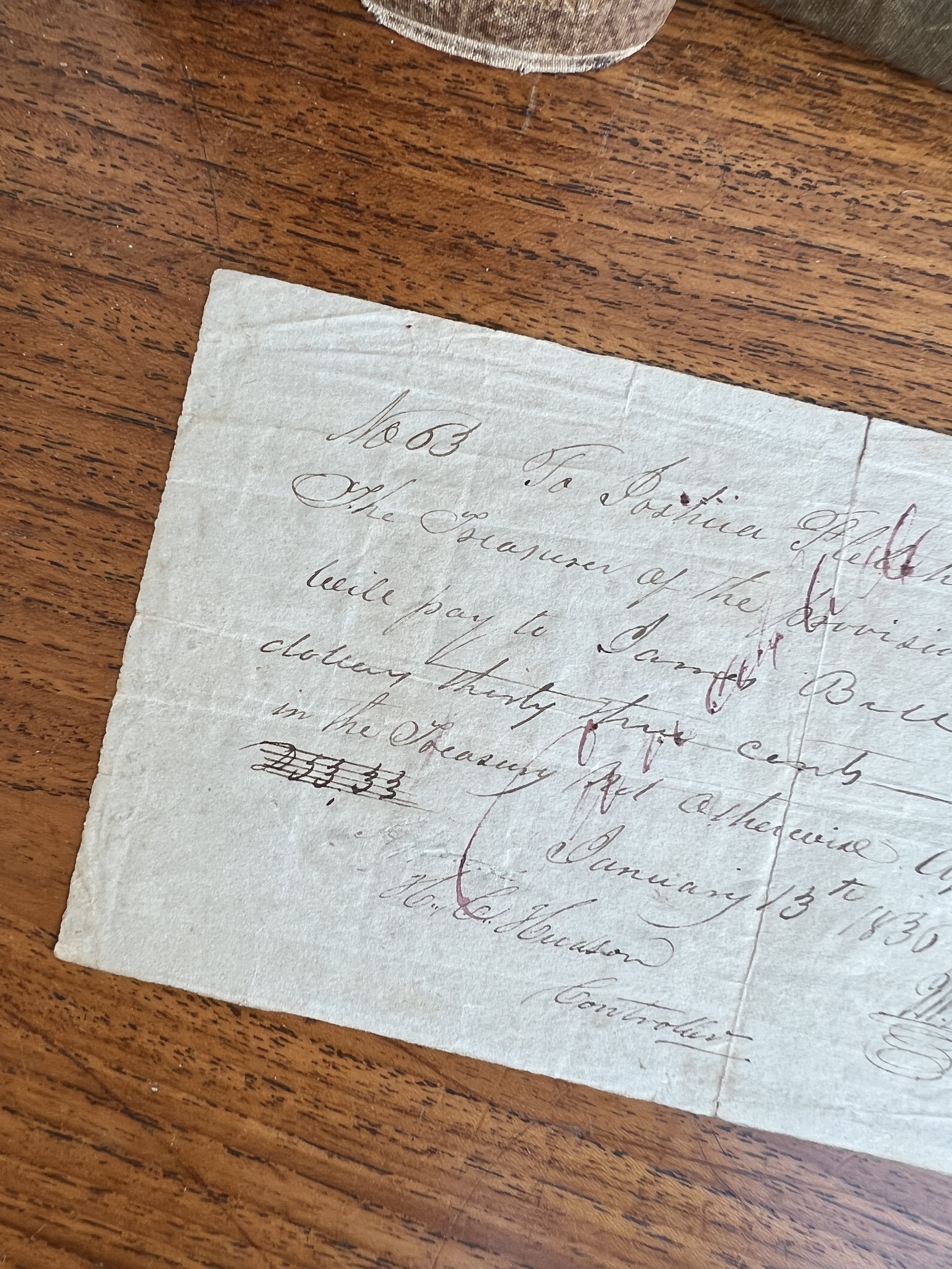➼ History & Context
Edward Burleson is best known as the third vice president of the Republic of Texas, serving under Sam Houston’s second tenure as president though they were not friends.
Burleson was a military man through and through, just like his father. Before moving to Texas, he served in militias in Alabama, Missouri, and Tennessee, as well as in the War of 1812 alongside his Company Captain father James. During the Texas Revolution, Burleson quickly rose in the ranks of the Texian Army.
After serving as second in command under General Austin at the Siege of Béxar, in 1835 Burleson was elected Major General of Texas Volunteers and took control of the volunteer army currently besieging San Antonio de Béxar, and received the surrender of Mexican general Martín Perfecto de Cos.
Burleson was then appointed a Colonel of the Texas Regulars and led the First Volunteer Infantry Regiment at the Battle of San Jacinto. He was given Santa Anna’s sword after the general’s surrender.
Eventually promoted to Brigadier General of the Texas Regulars, Burleson continued to lead in the Texian Army after the War of Independence was over. He was a Texas senator in 1838 before becoming vice president under Houston in 1841. Though he ran for president himself in 1844, he lost to Anson Jones. Once annexed by the US, Burleson continued his Texas political career as a state senator.
➼ Carte de Visite
Abbreviated CdV, carte de visite were small photographs – albumen prints – of thin paper mounted on thicker card.
Patented by photographer André Adolphe Eugène Disdéri in Paris in 1854, but not popular for several years until after he published Emperor Napoleon III’s photograph, carte de visite of notable figures and celebrities caught on like wildfire and were quite collectable.
Dubbed “cardomania,” carte de visite became extremely popular as visiting cards, traded among friends and family and displayed in collection albums throughout the Victorian era, and widely used as a relatively inexpensive way for family and friends to send photos to loved ones during the Civil War.
By the 1870s the larger “cabinet cards” took over and remained in demand until Kodak created the personal Brownie camera in the early 20th century.









































































